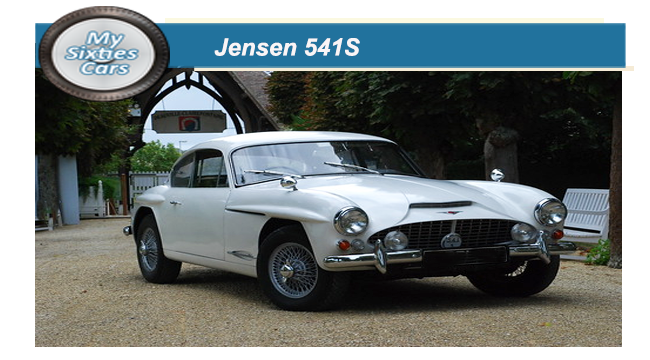
In October 1960. Jensen Motors released the 541S, promoted as the luxury GT model of the Jensen 541 series.
The revised 541S had undergone an extensive, similar in appearance to the 541R, but four inches wider, while offering around 11 inches ( 28 centimetres) more headroom for both front and rear-seat passengers.
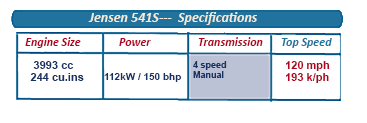 In keeping with its GT persona, the Jensen 541S luggage space considerably increased.
In keeping with its GT persona, the Jensen 541S luggage space considerably increased.
As before, the 541s body was constructed principally of glass-fibre, apart from the aluminium-panelled doors.
The triple-carburettor, 4-litre BMC engine used in the 541R was retained, although a rod accelerator linkage was added to provide more precise control than the original cables.
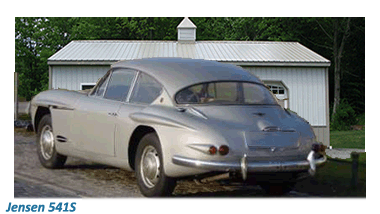 A Rolls-Royce version of the GM Hydra-Matic automatic transmission was standard, fitted with a Power-Lok limited-slip differential as standard.
A Rolls-Royce version of the GM Hydra-Matic automatic transmission was standard, fitted with a Power-Lok limited-slip differential as standard.
Those who still preferred a gear change could opt for four-speed manual transmission.
As was always the case with Jensen, clever touches abounded among them the all-around Dunlop disc brakes that ingeniously used the left-hand chassis side tube as a servo vacuum reservoir.
In terms of appearance, the one significant change between the 541S and the 541R was the "S" came with a conventional radiator grille (a notable improvement on the cumbersome flap style design used on the 541R).
![]()
This particular innovation was designed to allow for the extra heat that would be generated by fitting the new Chrysler V8 engine that Jensen were testing.
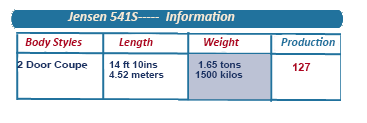 In any event, the new grille proved to be superfluous as the engine update never took place, as demand for the 541S gradually petered out.
In any event, the new grille proved to be superfluous as the engine update never took place, as demand for the 541S gradually petered out.
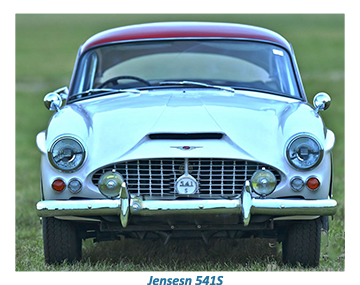 Another first that the Jensen 541S brought was that the car came with driver and front-seat passenger seat belts, making it the first British car to be so equipped as standard.
Another first that the Jensen 541S brought was that the car came with driver and front-seat passenger seat belts, making it the first British car to be so equipped as standard.
In keeping with Jensen's policy to give outstanding value for money, which invariably affected the company's " bottom line" a long lost of accessories came as standard.
From August 1961 electric rear window demisters were fitted, and in November a thermostatically controlled electric fan replaced the engine-driven one.
By the beginning of 1962, the brutal fact may have begun to sink in Jensen that the 541S was not going to be the best seller that the company was hoping for, hastening development on its replacement, the C-V8 which was introduced while the 541S was still in production.
First to be discontinued, in March 1962, was the manual version, never much in demand, although the automatic version outlived it by over a year, terminated in September 1963.
![]()
Somewhere along the way, Jensen missed the boat with the 541S, which was a worse car than the model that it replaced, the 541R, being heavier and less enjoyable to drive.
T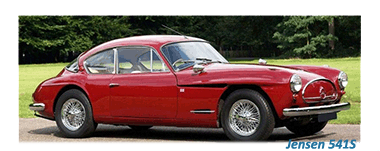 he extra passenger space that the body conversion had allowed worked against the model, as it was much slower.
he extra passenger space that the body conversion had allowed worked against the model, as it was much slower.
An "albatross" in every way, the 541S, as a result of its lack of sales caused financial knock-on effect at Jensen from which it would take years to recover.






